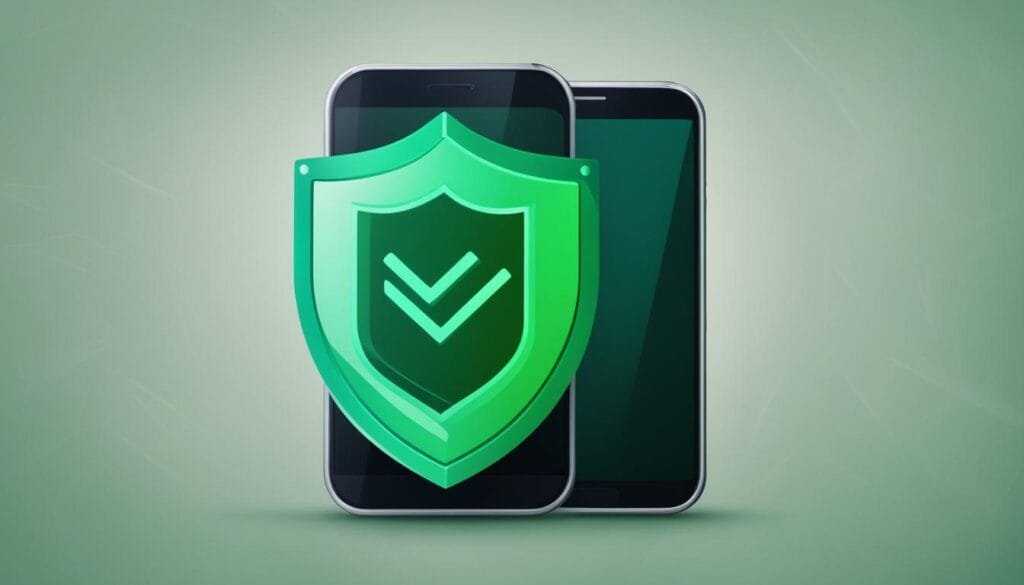Mobile banking alerts have become an essential tool for managing your finances and staying updated on your account activity. These alerts enable you to monitor your transactions, detect suspicious activity, and receive important notifications in real-time. By setting up and using mobile banking alerts wisely, you can maximize your financial insights and keep your funds secure.
Key Takeaways:
- Mobile banking alerts help you stay on top of your finances and protect your accounts.
- Set up alerts through your mobile banking app or online banking portal.
- Customize your alert preferences based on your needs and preferences.
- Regularly monitor your alerts to ensure they match your transactions and account activity.
- Contact your financial institution immediately if you notice any suspicious activity.
How to Set Up Mobile Banking Alerts
Setting up mobile banking alerts is an essential step in managing your finances effectively and staying updated on your account activity. To begin, ensure that you have a mobile banking app or access to online banking through your financial institution. Once you have the necessary tools, log into your account and navigate to the settings or notifications section.
In this section, you will be able to select the types of alerts you want to receive. Common options include transaction notifications, balance alerts, and security notifications. Choose the alerts that are most relevant to your financial goals and needs. You may also have the option to select how you want to receive these alerts, such as through push notifications, text messages, or email notifications. Customize your alert preferences based on your preferred mode of communication.
It’s important to note that different banks may have variations in their mobile banking alert setup process. Always refer to your bank’s specific instructions for the most accurate and up-to-date information on how to set up mobile banking alerts.
Table: Types of Mobile Banking Alerts
| Alert Type | Description |
|---|---|
| Transaction Notifications | Receive real-time notifications about transactions made on your account, including purchases, deposits, and withdrawals. |
| Balance Alerts | Stay informed about your account balance with alerts for low balance, high balance, or when your balance falls below a certain threshold. |
| Security Notifications | Get notified about suspicious activities, such as multiple failed login attempts or changes in your contact information. |
By taking the time to set up mobile banking alerts, you can ensure that you receive timely notifications about your account activity, helping you stay on top of your finances and detect any potential issues promptly.
How to Use Mobile Banking Alerts
Once you have set up mobile banking alerts, it’s crucial to actively use them to stay informed about your account activity. Regularly monitor the alerts you receive to ensure that they match your transactions and account activity. If you receive an alert about a transaction or activity that you didn’t initiate, it could be a sign of suspicious activity or potential fraud. In such cases, it’s important to contact your financial institution immediately to report the issue and take appropriate actions to secure your account.
Account monitoring is a key aspect of using mobile banking alerts effectively. By staying vigilant and regularly reviewing the alerts, you can quickly identify any unauthorized transactions or suspicious activities. This proactive approach allows you to take immediate action, helping to prevent further damage to your finances and ensuring the security of your account.
Why Account Monitoring Matters
Account monitoring is essential because it allows you to detect and respond to any potential fraudulent activities promptly. By using mobile banking alerts, you can receive real-time notifications regarding your account, which help you stay informed and promptly address any suspicious activities. This level of vigilance can protect you from financial harm and provide peace of mind.
| Benefits of Account Monitoring | Tips for Effective Account Monitoring |
|---|---|
|
|
By actively using mobile banking alerts and monitoring your account, you can take control of your financial security. Stay alert and promptly respond to any suspicious activities to safeguard your finances and enjoy a worry-free banking experience.
Best Practices for Using Mobile Banking Alerts
When it comes to mobile banking alerts, following best practices can help you make the most out of this powerful tool. By implementing these practices, you can ensure that you receive timely notifications about your account activity and stay on top of your financial health.
Set up Balance Alerts
One of the key best practices for using mobile banking alerts is to set up balance alerts. These alerts notify you when your account balance reaches a certain threshold. By customizing this feature to your desired balance level, you can avoid overdrafts and ensure that you have enough funds to cover your expenses. Balance alerts provide a proactive approach to managing your finances and give you peace of mind knowing that you will be alerted if your balance falls below a certain limit.
Enable Fraud Alerts
Another crucial best practice is to enable fraud alerts. These alerts notify you of any suspicious activity on your account, such as unauthorized transactions or potential fraud attempts. By promptly responding to these alerts, you can take immediate action to protect your account and prevent any further unauthorized access. Fraud alerts serve as an additional layer of security and give you the confidence that your financial information is being monitored.
Regularly Review and Update Alert Settings
It’s essential to regularly review and update your alert settings to ensure that they align with your financial goals and needs. As your financial situation changes, you may need to adjust the types of alerts you receive or the frequency of notifications. Take the time to evaluate your current alert preferences and make any necessary updates to ensure that you are receiving the right information at the right time. By keeping your alert settings up to date, you can maintain an effective and personalized mobile banking experience.
By following these best practices for using mobile banking alerts, you can enhance your financial management and keep your funds secure. Remember to customize your alert preferences, set up balance alerts, enable fraud alerts, and regularly review and update your settings. By doing so, you can stay informed, proactive, and in control of your financial well-being.
What are the Compliance and Regulations to be Aware of When Using Mobile Banking Alerts?
When using mobile banking alerts, it is crucial to be aware of the navigating compliance and regulations in mobile banking. Financial institutions must adhere to strict guidelines to ensure data security, privacy, and fraud prevention. Understanding the policies surrounding transaction notifications and account alerts helps protect users’ sensitive information while enjoying the convenience of mobile banking.
Conclusion
Mobile banking alerts are an essential tool for secure banking and efficient financial management. By setting up and using these alerts wisely, you can stay updated on your account activity, detect suspicious transactions, and maintain control over your funds. With real-time notifications, mobile banking alerts provide valuable insights that help you make informed financial decisions.
By actively monitoring the alerts you receive, you can ensure the security of your banking experience. If you notice any unexpected activity or transactions, it is crucial to contact your financial institution immediately to report the issue and protect your account. Remember to always confirm any protocols or responses with your bank for added security.
Maximize the benefits of mobile banking alerts by customizing your settings. Set up balance alerts to keep track of your account balances and avoid overdrafts. Enable fraud alerts to receive timely notifications about potential fraudulent activities. Regularly reviewing your alert preferences ensures that they align with your financial goals and needs.
In conclusion, mobile banking alerts empower you to manage your finances effectively, safeguard your funds, and maintain peace of mind. Harness the power of these alerts to stay on top of your financial well-being and take control of your banking experience.
FAQ
What are mobile banking alerts?
Mobile banking alerts are notifications that you can set up to receive on your mobile device or through email, providing you with real-time updates on your account activity.
How do I set up mobile banking alerts?
To set up mobile banking alerts, you need to have a mobile banking app or access to online banking. Log into your account, go to the settings or notifications section, and choose the types of alerts you want to receive and how you want to receive them.
What types of alerts can I set up?
You can set up alerts for transaction notifications, balance alerts, security notifications, and more.
How can mobile banking alerts help me?
Mobile banking alerts can help you stay on top of your transactions, monitor your account for suspicious activity, and receive important notifications in real-time, allowing you to manage your finances more effectively and keep your funds secure.
What should I do if I receive an alert about a transaction I didn’t initiate?
If you receive an alert about a suspicious transaction, it could be a sign of potential fraud. In such cases, it’s crucial to contact your financial institution immediately to report the issue and take appropriate actions to secure your account.
How often should I review my mobile banking alerts?
It’s important to regularly monitor the alerts you receive to ensure they match your transactions and account activity. Review them as frequently as you feel necessary to stay informed about your financial situation.
Can mobile banking alerts help me avoid overdrafts or low balances?
Yes, by setting up balance alerts, you can keep track of your account balances and receive notifications when your balance is low, helping you avoid overdrafts or potential financial issues.
What are some best practices for using mobile banking alerts?
Some best practices include enabling fraud alerts to be notified of potential fraudulent activities, regularly reviewing your alert settings to align them with your financial goals, and confirming any suspicious activities or protocols with your financial institution.

